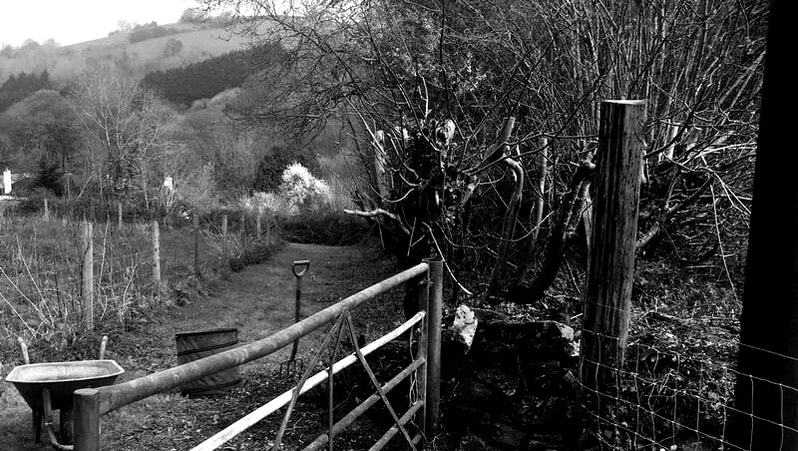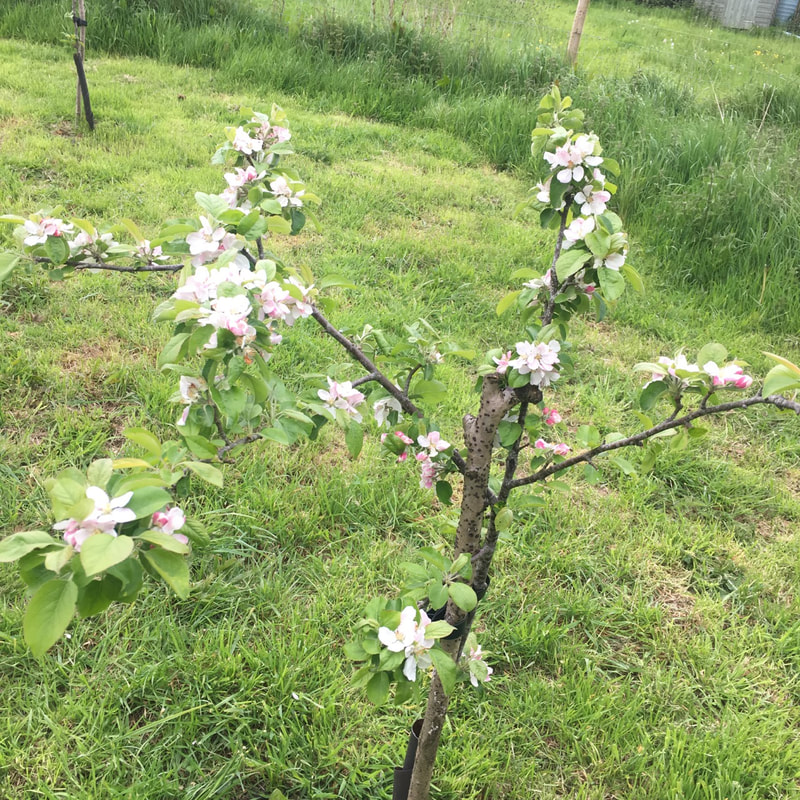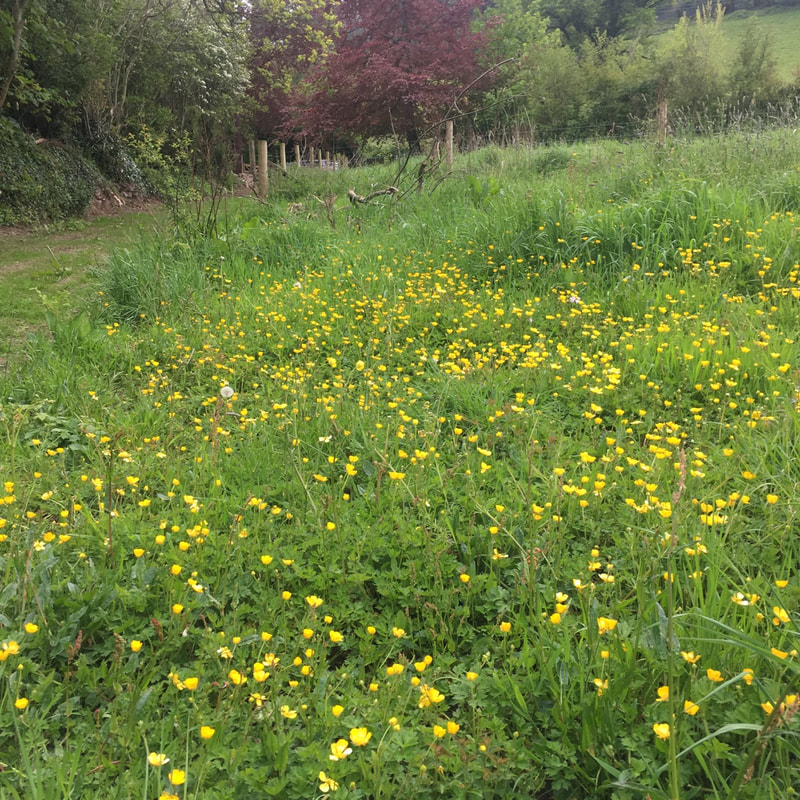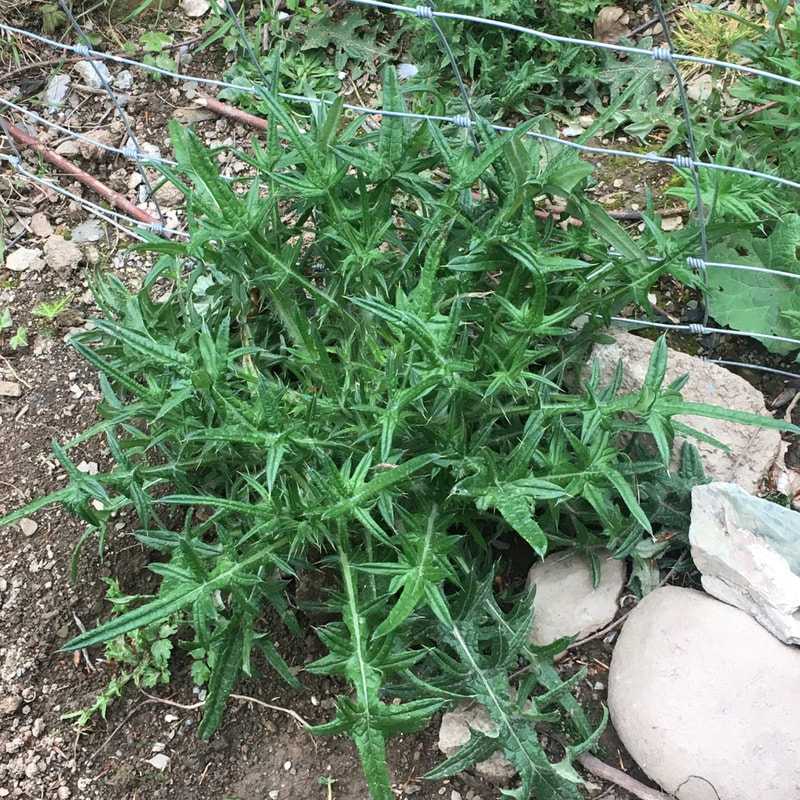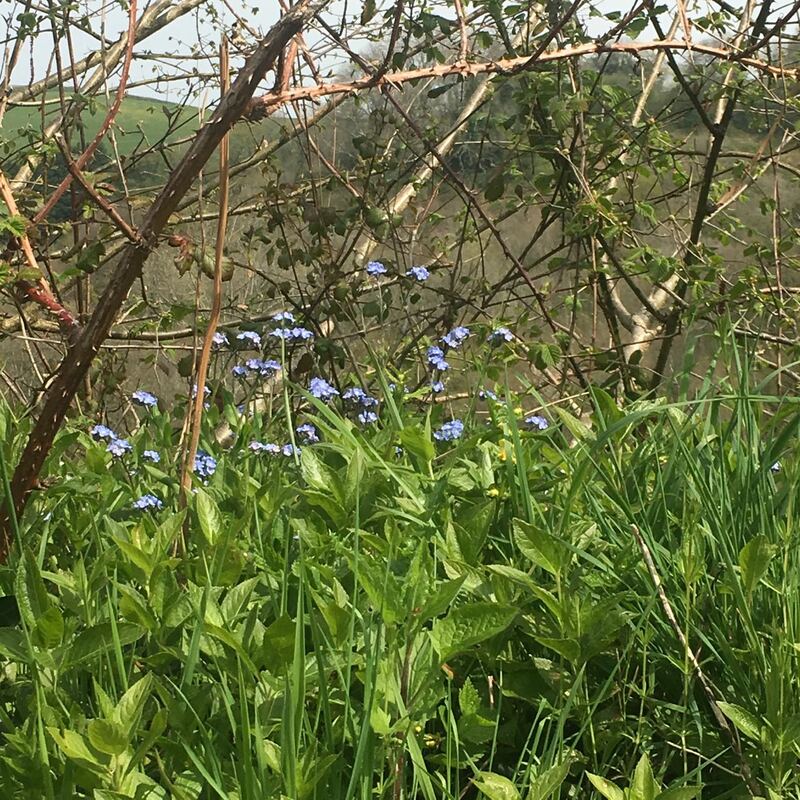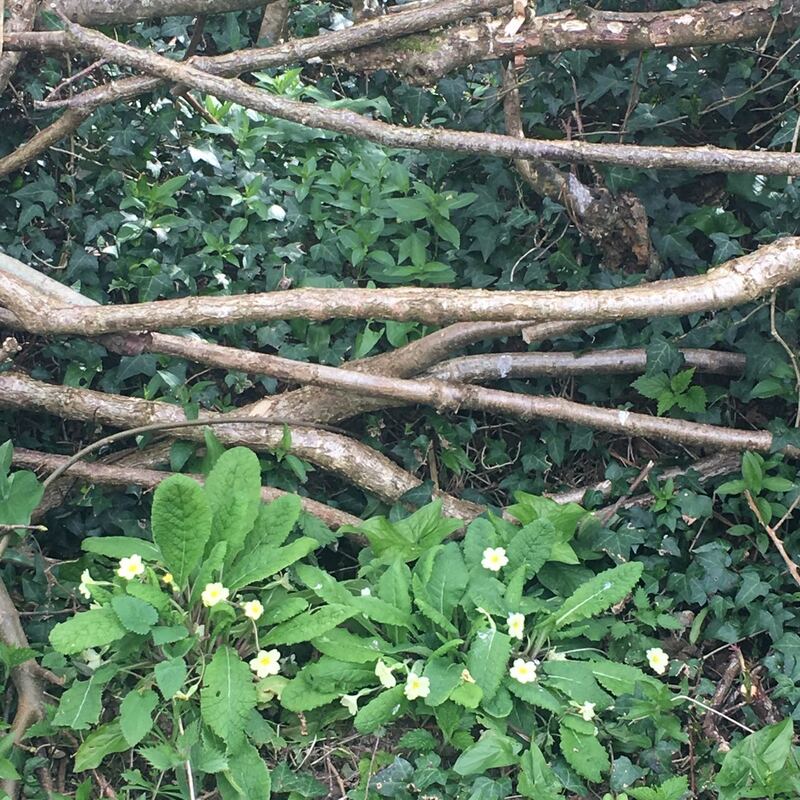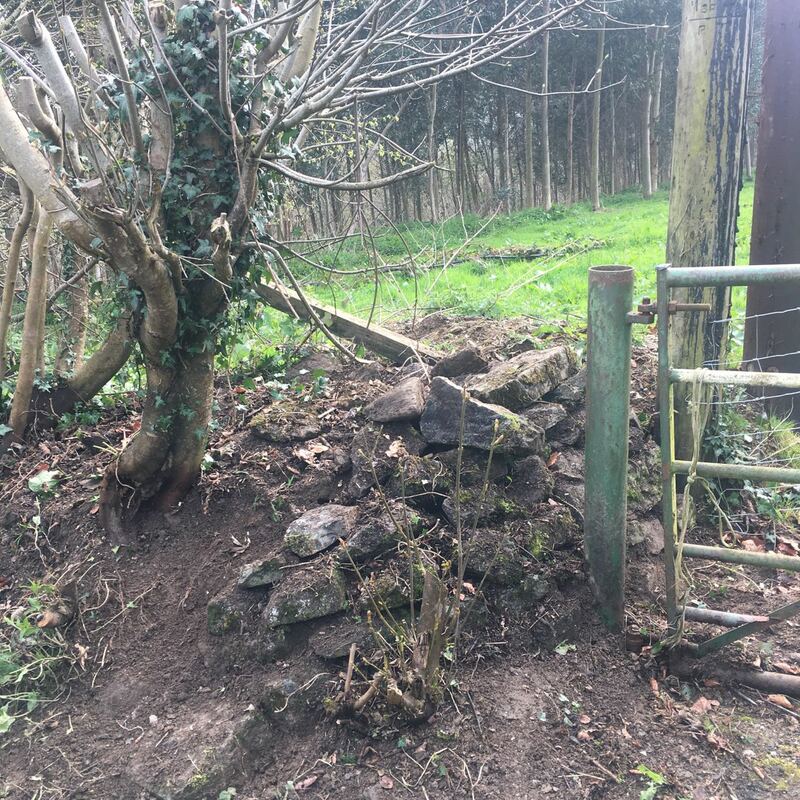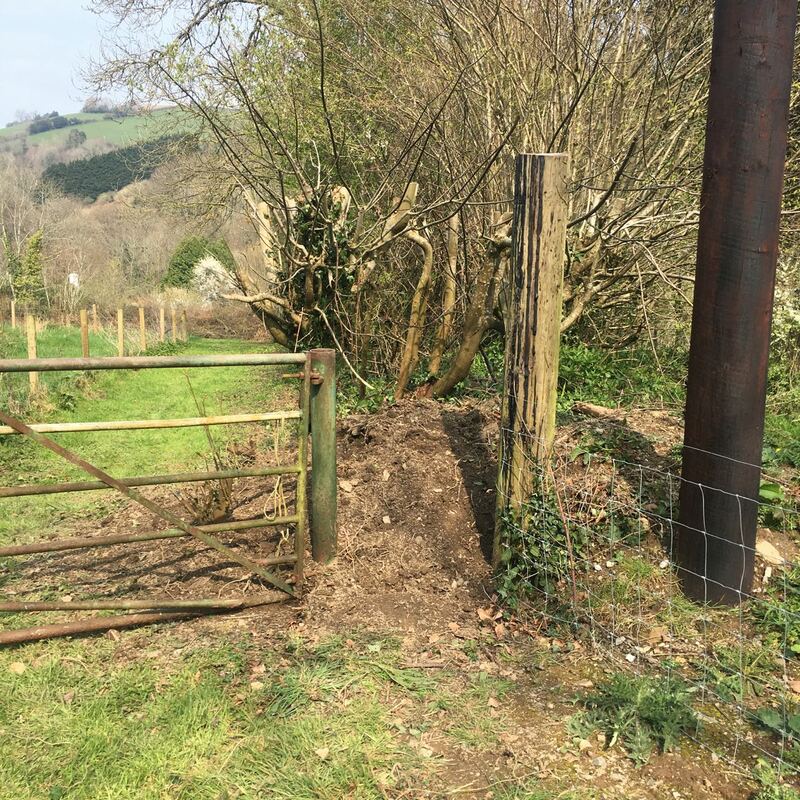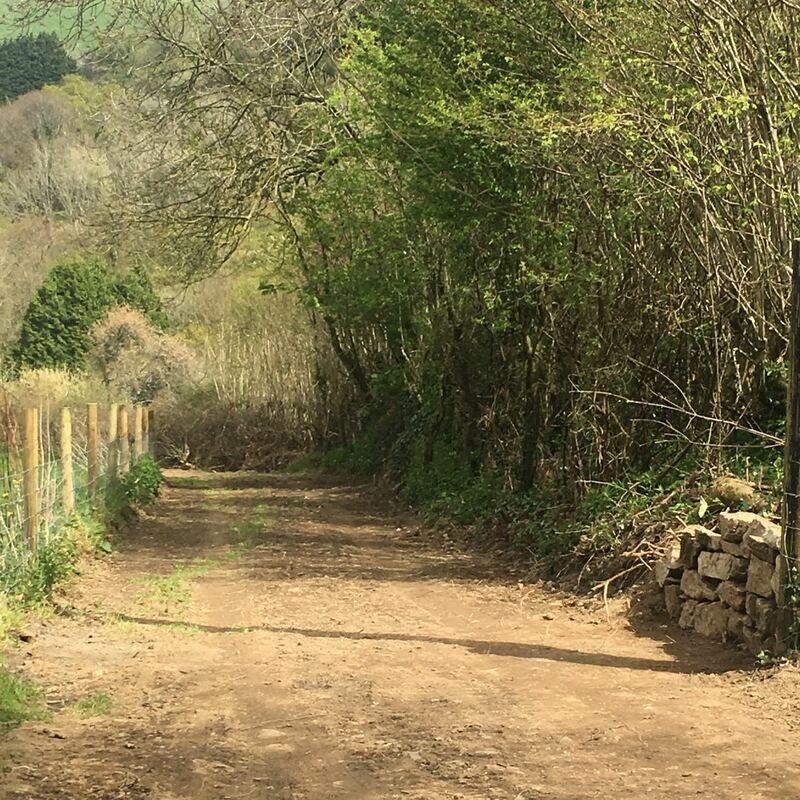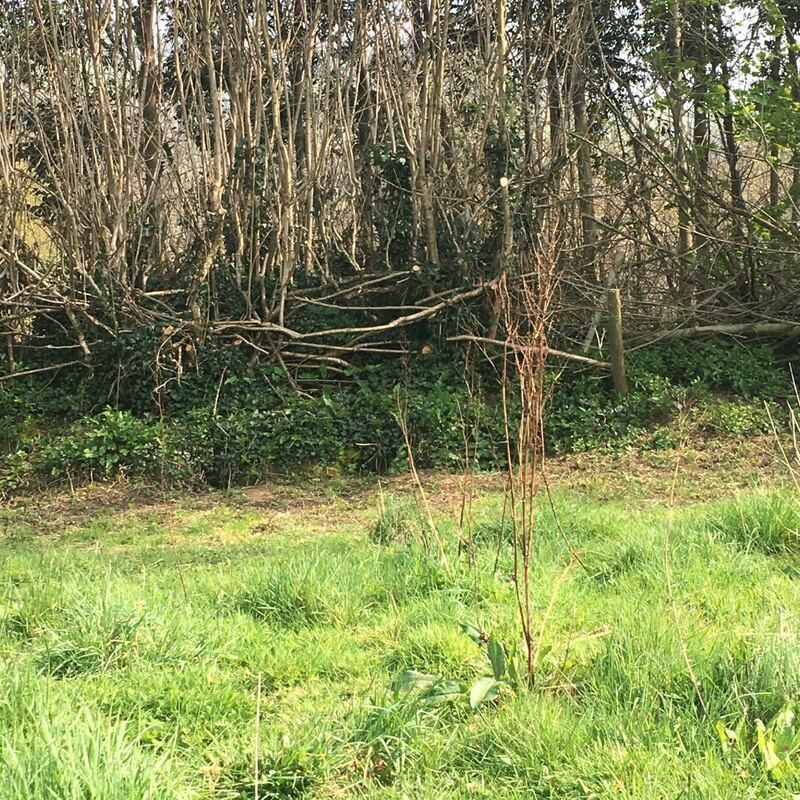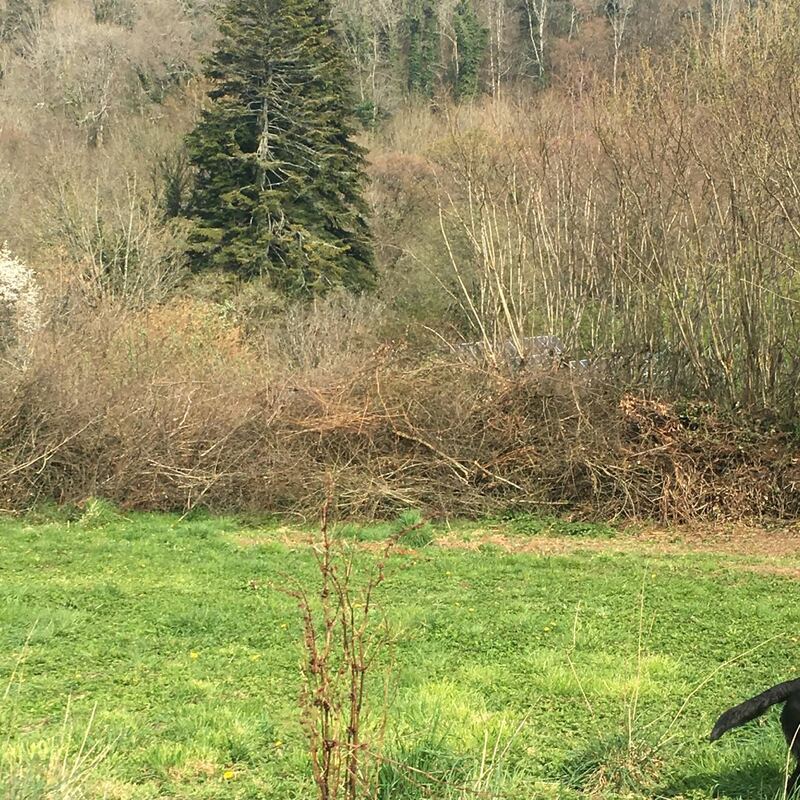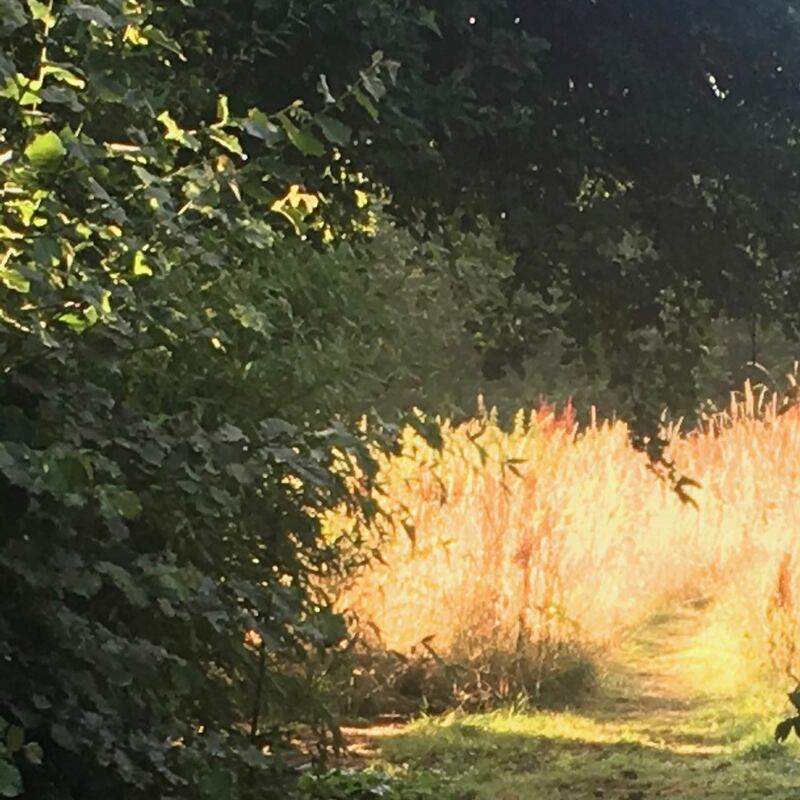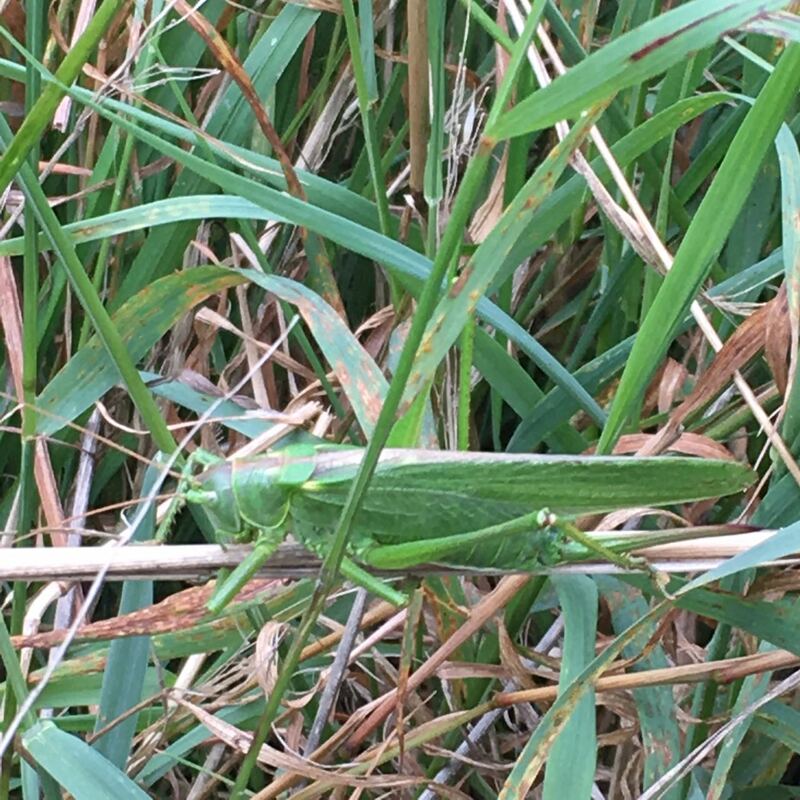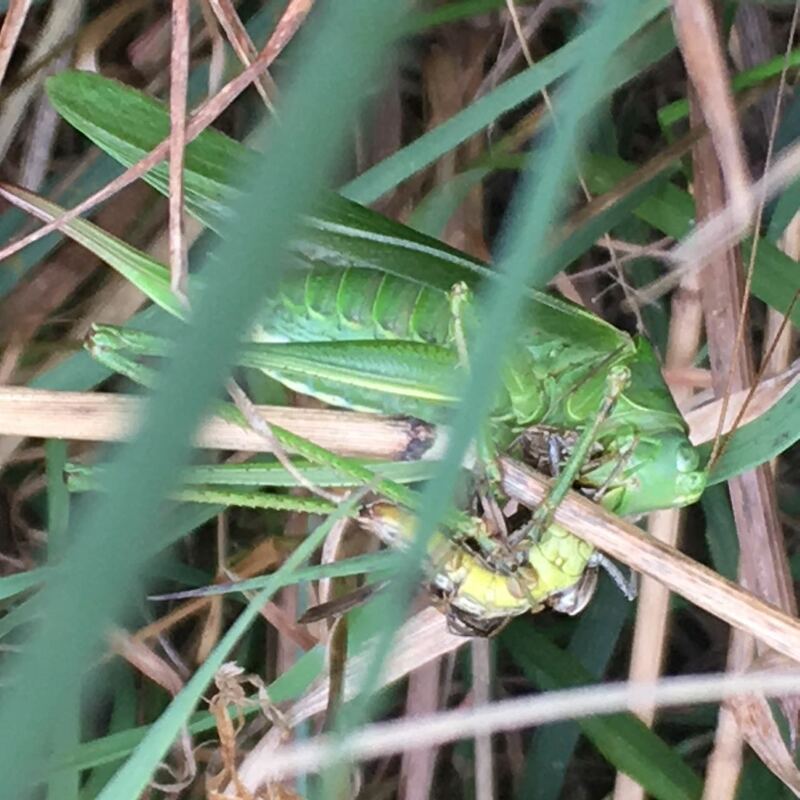Field for now
|
|
|
June: Meadow The few days of rain in the past weeks have given the wild a head start: Comfrey in huge clumps. It will steal the meadow bed but is a beautiful force: pollen for the bees, insect roost, fertiliser 'soup'... high drooping pink flowers for months. Elsewhere the moles are delighting in the freshly levelled soil: perfect exit holes everywhere. May: Orchard Sudden blossom from the two apple trees planted in winter 2017. We will pick the fruit when tiny to encourage strong roots – advice from a grower. Alongside, the cherry is having a blackfly-free spring and the two Dittisham plums planted in winter appear healthy, shooting later than the apples. Our mown circle of fruit trees is a tiny orchard. April: Track Now we begin the widening of the overgrown route from the lane. In places the drystone wall has collapsed and the blackthorn, brambles and ivy have edged to the centre of the track. First we uncover and remove sections of fallen stone, noting precious primroses that we will lift and return once the digger has finished clearing back to the boundary. March: Field Two days clearing, weeding and raking and I have laid down an area of meadow seed which should appear as grass and reach six inches by May. All year I will be cutting it back from six to two inches to prepare for wild flowers next year. I'm excited, even with this timeline, to see if this will work. In year two it has one cut in May and then is left to nature. February: Old hedge The 70-metre wildlife hedge was cut in January and left for us to clear. This takes three of us a day, working non-stop to weave thicker branches back into the much thinned hedge and create a sweep of habitat with the rest, to encourage the hedgehog, dormouse and birds. We are ahead of the nesting clock: 1 March is the cut-off for touching a hedgerow. January: New hedge Twice this month we have braved wet conditions to put in hedge - it's new planting, where the stock proof fence marks our boundary, to encourage wildlife, especially rare bats that move up the valley within their 4km foraging radius. We have mimicked the main hedgerow with whips of hazel, blackthorn, hawthorn and rose to get things started. |
|
